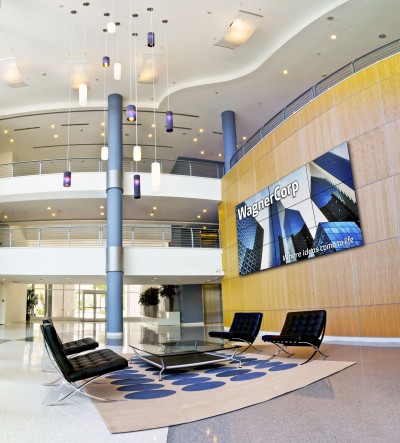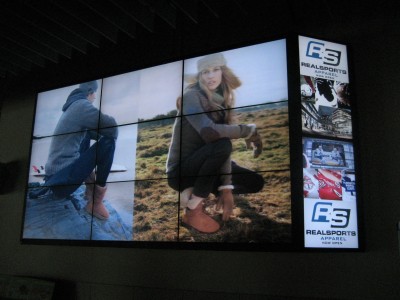Chris Connery, VP of DisplaySearch’s personal computer (PC) and large-format commercial display market research group.

Architects and other designers of built spaces are now coming on board, helping to plan contextually relevant environments for digital signage.
“It takes planning, planning, planning,” says Steve Harris, vice-president (VP) and general manager (GM) of Cineplex Digital Solutions in Waterloo, Ont. “You have to get your strategy straight upfront.”
Certainly, in the wake of some failed past deployments, there is a lot more thoughtful planning today for digital signage networks. Each project’s objectives need to be defined early, so the right technology can then be applied to achieve those objectives.
A typical network deployment involves the following steps:
- Initial concept development (one to four weeks).
- Getting ‘buy-in’ from relevant stakeholders (two to six weeks).
- Network overview planning (one to 18 months).
- Pilot test and refinement (one to four months).
- Deployment and operations (four to 10 years).
“The value of digital signage does not decline, but increases over time when content messaging is refined,” says Paco Underhill, who studies the way people’s surroundings influence their behaviour. “Our visual language is evolving faster than our spoken words. We process images faster and it is a single language.”
Deeper integration
The most important factors for a successful digital signage network are for it to be reliable, available and scalable, i.e. supporting further network growth and adaptability. Digital signage lends itself to being paired or integrated with many other technologies and services, including safety and security alerts, mobile communications and training videos.
“We’ll see more screen integration with the rise of interactivity, social media and metrics,” says Nancy Biglow, marketing manager for digital signage software provider Scala Canada.

Advertisers are learning how best to develop and repurpose content for digital signage. Photos by Peter Saunders
In this sense, digital signage is part of a communications continuum, whereby multiple media are used to maximize the success—and minimize the costs—of a given communications effort. With a ‘transmedia’ approach, content created for use in one medium can be repurposed and reused for presentation through another medium, while maintaining consistency of branding and messaging.
Dynamic place-based media can communicate with an ‘audience of many,’ such as through out-of-home (OOH) advertising networks, but also reach a highly targeted ‘audience of one’ with refined content, based on demographics, locations and activities.
While many advertisers are increasingly recognizing the benefits of the medium as an effective way to communicate with targeted audiences, special technology is simultaneously being deployed to collect metrics. This trend is helping to build a stronger, evidence-based business case for the success of digital signage.





